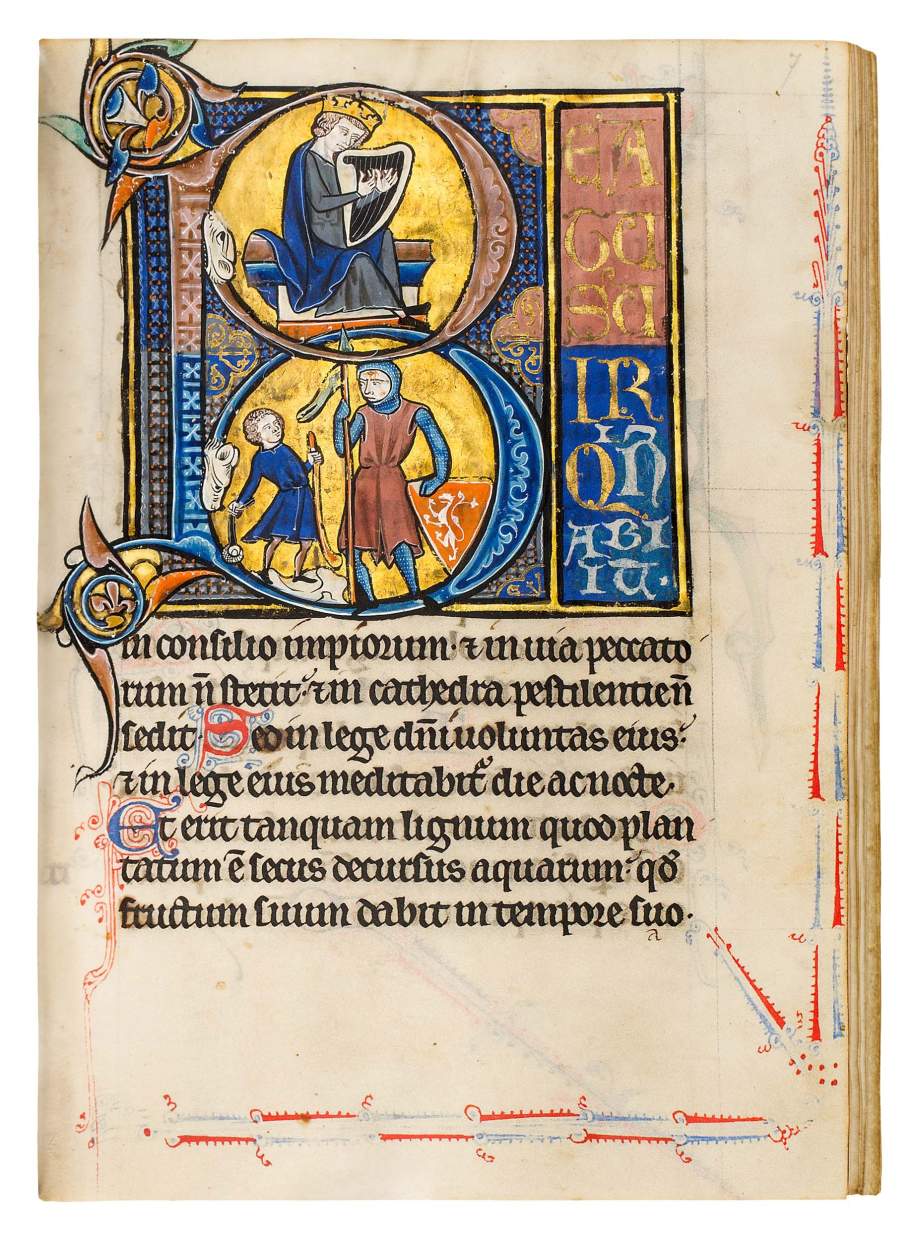Artworks


Psalter-Hours, with calendar, canticles, and Hours of the Virgin.
Manuscript in Latin on vellum, illuminated by the workshop of the Bible moralisée.
France, Paris, c. 1250-1260.


Psalter-Hours, with calendar, canticles, and Hours of the Virgin.
Manuscript in Latin on vellum, illuminated by the workshop of the Bible moralisée.
France, Paris, c. 1250-1260.


Psalter-Hours, with calendar, canticles, and Hours of the Virgin.
Manuscript in Latin on vellum, illuminated by the workshop of the Bible moralisée.
France, Paris, c. 1250-1260.


Psalter-Hours, with calendar, canticles, and Hours of the Virgin.
Manuscript in Latin on vellum, illuminated by the workshop of the Bible moralisée.
France, Paris, c. 1250-1260.


Psalter-Hours, with calendar, canticles, and Hours of the Virgin.
Manuscript in Latin on vellum, illuminated by the workshop of the Bible moralisée.
France, Paris, c. 1250-1260.


Psalter-Hours, with calendar, canticles, and Hours of the Virgin.
Manuscript in Latin on vellum, illuminated by the workshop of the Bible moralisée.
France, Paris, c. 1250-1260.


Psalter-Hours, with calendar, canticles, and Hours of the Virgin.
Manuscript in Latin on vellum, illuminated by the workshop of the Bible moralisée.
France, Paris, c. 1250-1260.


Psalter-Hours, with calendar, canticles, and Hours of the Virgin.
Manuscript in Latin on vellum, illuminated by the workshop of the Bible moralisée.
France, Paris, c. 1250-1260.


Psalter-Hours, with calendar, canticles, and Hours of the Virgin.
Manuscript in Latin on vellum, illuminated by the workshop of the Bible moralisée.
France, Paris, c. 1250-1260.


Psalter-Hours, with calendar, canticles and Hours of the Virgin.
Manuscript in Latin on vellum, illuminated by the workshop of the Bible moralisée.
France, Paris, c. 1250-1260.


Psalter-Hours, with calendar, canticles, and Hours of the Virgin.
Manuscript in Latin on vellum, illuminated by the workshop of the Bible moralisée.
France, Paris, c. 1250-1260.


Psalter-Hours, with calendar, canticles, and Hours of the Virgin.
Manuscript in Latin on vellum, illuminated by the workshop of the Bible moralisée.
France, Paris, c. 1250-1260.


Psalter-Hours, with calendar, canticles, and Hours of the Virgin.
Manuscript in Latin on vellum, illuminated by the workshop of the Bible moralisée.
France, Paris, c. 1250-1260.

This work is now sold.
Sometimes profusely decorated and illustrated as an aid to meditation and devotion, the Psalter gained a central place in the history of the medieval book. It was increasingly in demand by the noble laity, who developed a taste for richly illuminated manuscripts. In the early 13th century, the Psalter-Hours, a hybrid of a full Psalter and offices, was the prayer book for the laity, but soon afterward the Books of Hours became en vogue and replaced the Psalter-Hours.
The present manuscript includes a richly illuminated calendar with twenty-four roundels representing the occupations of the months and the signs of the Zodiac. Each is painted on a gold ground within a circular blue or red frame patterned in white.
Each main text section is introduced by historiated initials (some divided into two scenes) on a square panel with a chequered ground, with lavish use of gold leaf and short foliate twines reaching out into the margins from those letters. The incipits are introduced by appealing initials, fancifully decorated and sometimes including small animals.
The Psalter-Hours offered the possibility to personalise the pictorial program, such as including a portrait of the recipient. Such a representation appears here chiefly in the Matins initial of the Office of the Virgin, representing the Virgin and Child as intercessor for both men and women.
King David, the composer of the Psalms, is primarily the protagonist of the luminously illuminated initials. This manuscript is an extremely fine Parisian example of the workshop responsible for the royal commissions of the Bible moralisée. The facial types and the patterning of the background correspond in the Beatus page of the Psalter and in the famous Bible.
The artists who worked in the Parisian Bible moralisée workshop have not yet been identified. They generally collaborated so closely that their hands could not be reliably distinguished. Our Psalter-Hours, however, seems to have been illustrated by one artist only, whose style is determined by classically elegant and flexible figures draped in softly modelled garments. Facial features are delicately added with quill and ink.



